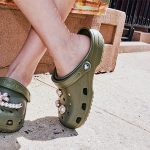Smith & Wesson Holding Corp. reported earnings for the fourth quarter that came in at the top end of its updated guidance. The company continues to see signs that demand for consumer handguns are returning to normal. However, earnings for the period still trailed year-ago levels due to higher expenses and lower margins and the company gave a somewhat soft outlook going forward despite the improved top-line trends.
In its fiscal fourth quarter, Smith & Wesson’s net income slid 12.6 percent to $21.9 million, or 40 cents a share, compared to the year-ago period. Quarterly non-GAAP income from continuing operations slid 6.0 percent to $24.9 million, or 45 cents a share.
Sales increased 6.2 percent to $181.0 million. Firearm division sales slid 2.4 percent to $166.4 million. But that was offset by $14.6 million of net sales related to the company's new accessories division, which was established in connection with the acquisition of Battenfeld Technologies, Inc. (BTI) last December. The acquisition of Battenfeld increase Smith & Wesson's presence in the hunting and shooting accessories market.
“We are very pleased with our FY15 results which reflected strong year-end performance, despite a soft environment for consumer firearms that existed earlier in the fiscal year,” said James Debney, president and CEO, on a conference call with analysts.
Elaborating on the firearms performance, Debney noted that handgun sales were down 2.8 percent to $120.7 million in the quarter but the company continues to see order strength for its popular M&P Shield, SDVE and BODYGUARD 380 pistols, “demonstrating the ongoing consumer preference for our concealed carry firearms.”
Sales of handguns to consumers have started to recover after falling as much as 20 percent last year, outpacing a still-sluggish rifle market and helped by the introduction of concealed carry legislation in states including Illinois and Wisconsin.
Long gun sales for Smith & Wesson grew five percent to $34.2 million in the quarter, supported by strong sales of its M&P 15 Sport, its opening price point modern sporting rifle. Said Debney, “Our M&P 15 Sport is the industry-leading rifle in this category.”
Encouragingly, Federal Bureau of Investigation background checks for new gun owners rose 6.5 percent in May from a year earlier, a record for the month and another sign the market has bottomed after the boom-and-bust of 2013 and 2014. The industry had benefited in recent years from strong demand as gun enthusiasts stocked up on weapons amid speculation about possibly tighter regulations and lately have been challenged by inventory gluts as demand has returned to normal.
“Consumer demand continues to trend to its normal seasonal pattern,” Debney told analysts. Debney also said its internal market share checks show that Smith & Wesson remained the market leader in the handgun and the modern sporting rifle categories during the fourth quarter.
Distributor inventory of its products declined in the quarter by about 6,000 units to 112,000 units at the end of Q4, which was well below Smith & Wesson’s target threshold of eight weeks of sales cover. Since then, distributor units have increased to above eight weeks of sales cover, as expected, in anticipation of the start of the hunting season in October.
At the NRA convention in April, Smith & Wesson unveiled new line extensions that feature a specialized finish for several of its M&P pistols, and it tapped into the trend for suppressors by producing a M&P 22 compact with a threaded barrel.
Debney said that since Smith & Wesson acquired BTI, its new accessories division has experienced 27 percent year-over-year growth, “while delivering excellent gross margins.” He added, “We are very happy with this new division, which provides us with a broad, established platform for organic and inorganic growth in hunting and firearm accessories.”
Gross margin in the quarter fell to 37.1 percent from 40.9 percent. Total operating expenses rose 12 percent. Chief Financial Officer Jeffrey Buchanan said the company made more progress on reducing its inventories, which declined $20.2 million during the quarter.
As a result, robust cash flow allowed Smith & Wesson to fully pay down the $100.0 million revolving credit line it had used to facilitate the purchase of BTI and still end the quarter with $42.2 million in cash. Earlier last week, the company redeemed all of its 5.875 percent senior notes using the proceeds of a new $105.0 million five-year term loan, which has a favorable interest rate.
“These combined actions are focused on creating value for our shareholders by optimizing our capital efficiency, lowering our weighted average cost of capital, and strengthening our balance sheet to support future growth initiatives,” said Buchanan.
Looking ahead, Smith & Wesson forecast per-share adjusted earnings of 21 cents to 23 cents in the current first quarter and net sales of $140 million to $145 million. Analysts expected per-share profit of 25 cents and revenue of $145 million.
For the year ending in April 30, 2016, the company forecast per-share adjusted earnings of $1.02 to $1.07 and net sales of $605 million to $615 million. Analysts had expected per-share profit of $1.07 and revenue of $602 million.














